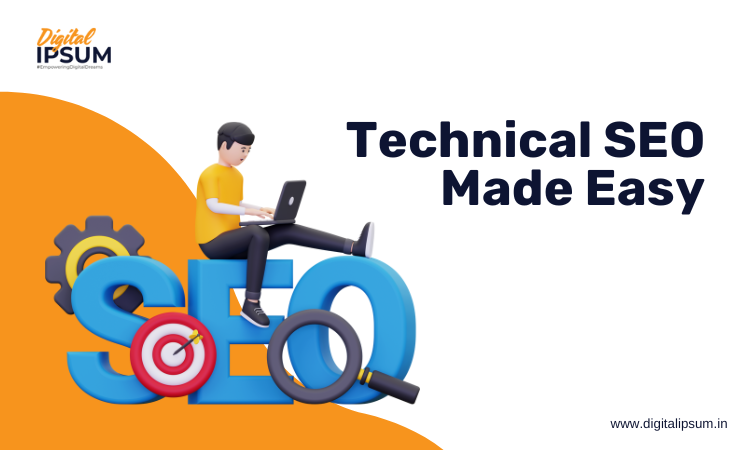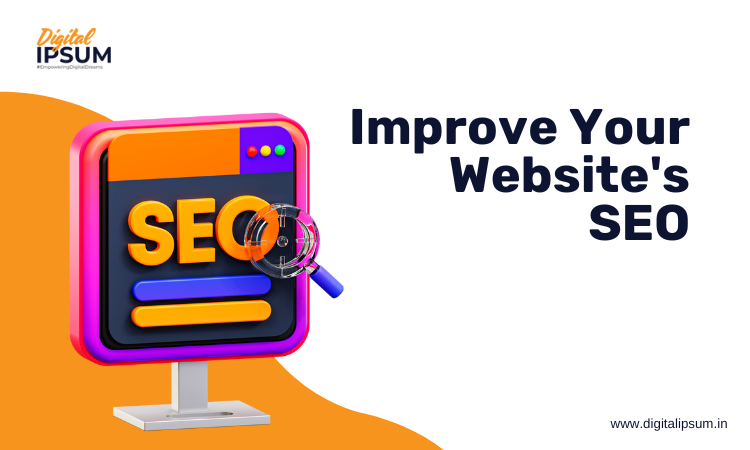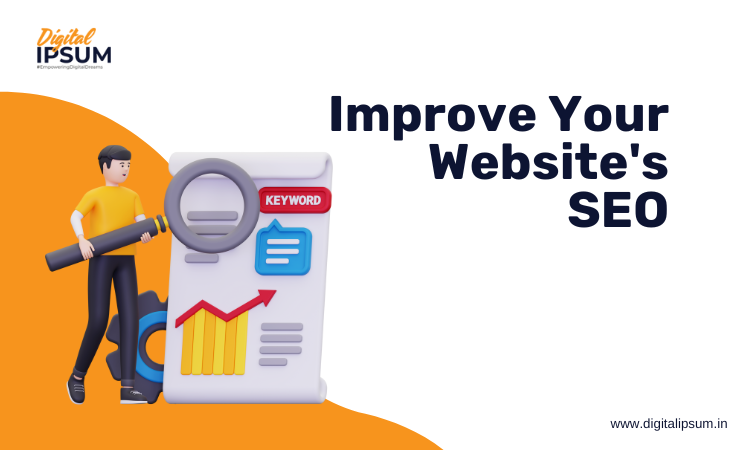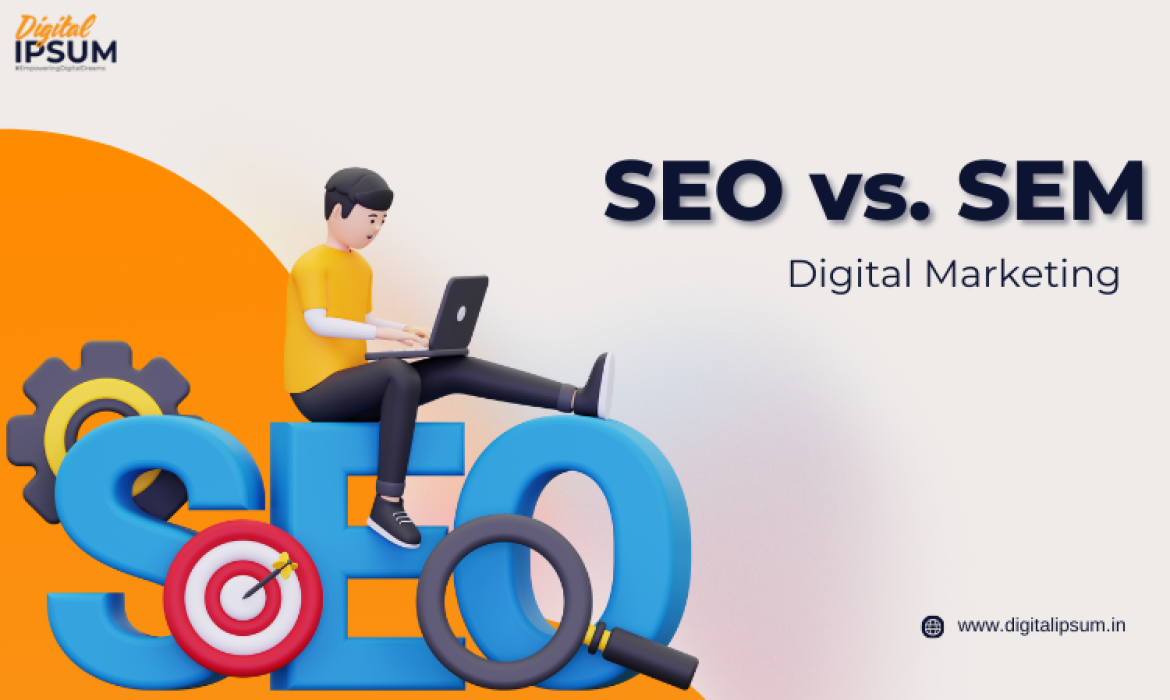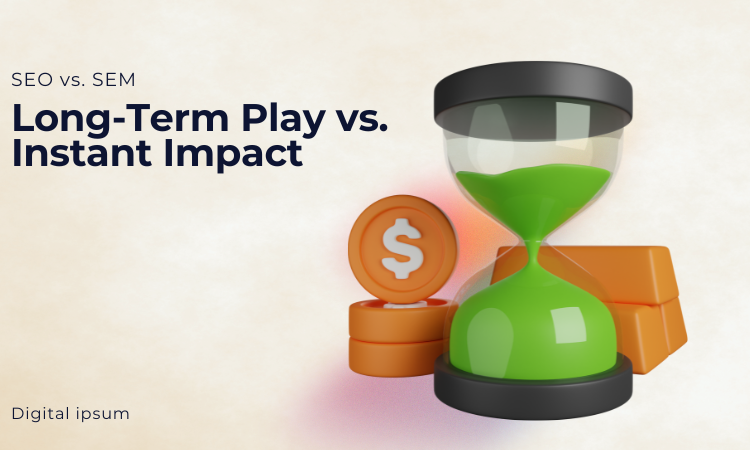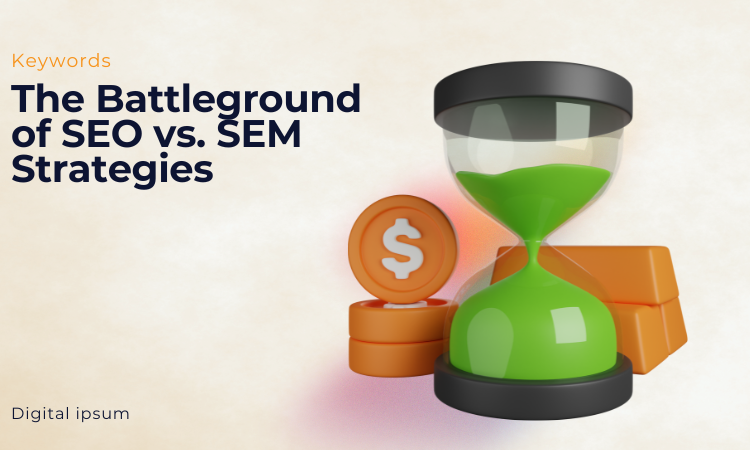Location Page SEO Is Essential to the Success of Your Website
In the rapidly evolving landscape of online marketing, search engine optimization (SEO) has become an indispensable tool for businesses aiming to enhance their online presence. One crucial aspect of SEO that holds particular significance for businesses with a physical presence is location-based SEO. This article delves into the fundamentals of location page SEO, exploring its impact on website success, key components for effective optimization, understanding local search ranking factors, and the undeniable benefits it brings to businesses.
The Impact of Location Page SEO on Website Success

Navigating the Local Landscape
In the digital age, consumers are increasingly relying on the internet to find local businesses. Whether it’s searching for the nearest coffee shop or locating a service provider in their vicinity, users turn to search engines like Google to streamline their decision-making process. This is where the importance of location page SEO comes into play.
Enhancing Visibility and Discoverability
Location page SEO is not just about ranking higher on search engine results pages (SERPs). It’s about ensuring that your business is easily discoverable by individuals in your target geographical area. By optimizing location-specific pages, businesses can improve their visibility, making it more likely for potential customers to find them when conducting local searches.
Competitive Advantage in Local Markets
For businesses operating in specific regions, mastering location page SEO provides a competitive edge. When consumers search for products or services within a particular location, businesses with well-optimized location pages are more likely to appear prominently in search results. This increased visibility translates into higher chances of attracting local customers, outshining competitors who may not have prioritized location-specific SEO strategies.
Key Components of Effective Location Page Optimization

Accurate Business Information
The foundation of effective location page SEO lies in providing accurate and up-to-date business information. This includes the business name, address, phone number (NAP), and other essential details. Ensuring consistency across online platforms is crucial for building trust with both users and search engines.
Compelling and Relevant Content
Quality content remains a key driver of SEO success, even in the realm of location-specific optimization. Crafting compelling content that speaks directly to the needs and interests of local audiences is essential. This not only aids in search engine rankings but also establishes a stronger connection with potential customers.
Optimized Meta Tags and Descriptions
Every location page should feature well-crafted meta tags and descriptions that incorporate relevant keywords. These meta elements provide a concise summary of the page’s content and play a crucial role in attracting clicks from search engine users.
Mobile-Friendly Design
As mobile usage continues to rise, ensuring that location pages are mobile-friendly is non-negotiable. Search engines prioritize mobile-friendly websites in their rankings, and a seamless mobile experience contributes to improved user satisfaction.
Understanding Local Search Ranking Factors

Google My Business (GMB) Optimization
One of the primary factors influencing local search rankings is the optimization of a business’s Google My Business listing. This involves providing detailed information, regularly updating business hours, and encouraging customer reviews. A well-optimized GMB profile can significantly boost a business’s visibility in local searches.
Local Citations and Backlinks
Building a strong online presence involves securing local citations and backlinks from reputable sources. Search engines view these citations as validations of a business’s legitimacy and relevance in a specific location, thereby impacting local search rankings positively.
User Reviews and Ratings
User-generated content, such as reviews and ratings, plays a crucial role in local search rankings. Positive reviews not only enhance a business’s reputation but also signal to search engines that it is a trusted and valuable resource for local users.
Benefits of Prioritizing Location Page SEO for Your Business
Targeted Customer Acquisition
By focusing on location-specific optimization, businesses can attract customers who are actively seeking products or services in their vicinity. This targeted approach to customer acquisition increases the likelihood of converting leads into actual customers.
Improved Conversion Rates
When users find a business that meets their local needs through a well-optimized location page, the chances of conversion are significantly higher. The convenience of a nearby solution often translates into quicker decision-making and, consequently, improved conversion rates.
Strengthening Community Connections
Prioritizing Location Page SEO fosters a sense of community connection. Local customers are more likely to engage with businesses that demonstrate a commitment to their specific location. This engagement extends beyond online interactions, contributing to a stronger bond between businesses and their local communities.
Best Practices for Crafting Location Pages That Drive Results
Introduction
Crafting effective location pages is a critical component of a successful local SEO strategy. In this article, we will explore the best practices for creating location pages that not only enhance your online presence but also drive tangible results for your business.
1. Strategic Keyword Research
Before diving into content creation, conduct thorough keyword research specific to your location. Identify the terms and phrases potential customers use when searching for products or services in your area. Incorporate these keywords naturally into your content, ensuring it aligns with user intent.
2. Localized and Relevant Content
Create content that speaks directly to the local audience. Highlight local events, landmarks, and community involvement. This not only makes your content more relatable but also signals to search engines that your business is closely tied to the geographical location.
3. Clear Navigational Structure
Ensure a user-friendly experience by implementing a clear navigational structure. Make it easy for visitors to find essential information, such as business hours, contact details, and location on a map. A well-organized structure contributes to a positive user experience, a factor search engines consider in rankings.
Optimizing Google My Business for Local Visibility
Leveraging the Power of Google My Business (GMB)
Google My Business is a cornerstone of local SEO, offering businesses the opportunity to appear in local search results and on Google Maps. Optimizing your GMB profile is crucial for enhancing local visibility.
1. Complete and Accurate Information
Fill out every section of your GMB profile with accurate and comprehensive information. This includes your business name, address, phone number, website, business hours, and categories. The more information you provide, the better Google can understand and showcase your business to local users.
2. High-Quality Visuals
Images play a significant role in attracting users’ attention. Upload high-quality images that showcase your business, products, and services. Include photos of the interior, exterior, staff, and any special offerings. Visual appeal can positively impact user engagement and perception.
3. Encourage and Respond to Reviews
Positive reviews build trust and credibility. Encourage satisfied customers to leave reviews on your GMB profile. Respond promptly to both positive and negative reviews, demonstrating your commitment to customer satisfaction. Engaging with reviews can contribute to improved local rankings.
Case Studies: Successful Implementation of Location Page SEO
Learning from Real-World Examples
Examining case studies provides valuable insights into the practical application of location page SEO strategies. Here, we explore examples of businesses that have successfully implemented these strategies to drive results.
1. Local Business A: Targeted Content Creation
Local Business A, a boutique coffee shop, implemented a content strategy that focused on creating location-specific blog posts. These posts highlighted community events, local partnerships, and unique aspects of the neighborhood. This approach not only boosted organic traffic but also fostered a strong sense of community engagement.
2. Service Provider B: GMB Optimization and Reviews
Service Provider B, a local plumbing company, prioritized Google My Business optimization. They regularly updated their profile with accurate information, posted relevant photos, and actively encouraged satisfied customers to leave reviews. This resulted in improved local visibility and a steady influx of service inquiries.
Common Mistakes to Avoid in Location Page Optimization

Pitfalls to Steer Clear of
While optimizing location pages, it’s essential to be aware of common mistakes that can hinder your success. Avoiding these pitfalls ensures that your efforts contribute positively to your local SEO strategy.
1. Inconsistent NAP Information
Maintain consistency in your business’s name, address, and phone number (NAP) across all online platforms. Inconsistencies can confuse both users and search engines, impacting your local search rankings negatively.
2. Ignoring Mobile Optimization
With an increasing number of users accessing information on mobile devices, neglecting mobile optimization is a critical mistake. Ensure that your location pages provide a seamless experience across various devices, contributing to improved user satisfaction and search engine rankings.
3. Overlooking Local Keyword Variations
While targeting specific keywords is crucial, it’s equally important to consider variations that users may employ in local searches. Overlooking these variations can result in missed opportunities to capture a broader local audience.
Monitoring and Measuring the Success of Your Location Page SEO Strategy

Metrics and Analytics for Success Evaluation
An effective location page SEO strategy doesn’t end with implementation; it requires ongoing monitoring and measurement. Understanding the key metrics to track ensures that you can assess the success of your efforts and make data-driven adjustments.
1. Local Search Rankings
Regularly monitor your business’s local search rankings for target keywords. Tools like Google Analytics and specialized SEO platforms can provide insights into your position on SERPs, helping you identify trends and opportunities.
2. User Engagement Metrics
Track user engagement on your location pages. Analyze metrics such as bounce rate, time on page, and click-through rate. Positive engagement metrics indicate that your content resonates with your audience and contributes to a positive user experience.
3. Conversion Rates and Goal Completions
The impact of your location page SEO strategy on business objectives is what ultimately determines its effectiveness. Track conversion rates and goal completions, whether they involve form submissions, online purchases, or other desired actions. This data helps you assess the direct impact of your local SEO efforts on your business’s bottom line.
Conclusion
Crafting location pages that drive results requires a combination of strategic planning, optimization techniques, and continuous evaluation. By following best practices, optimizing Google My Business effectively, learning from successful case studies, avoiding common mistakes, and monitoring key metrics, businesses can establish a robust foundation for local SEO success. As the digital landscape evolves, adapting and refining your location page SEO strategy ensures that your business remains visible, relevant, and competitive in the local market.
How Can Small Business Websites Produce SEO-Friendly Content?
Introduction:
In the fast-paced digital landscape, small businesses face the challenge of standing out among competitors. One key aspect of achieving online visibility is through search engine optimization (SEO). This article explores the fundamental strategies for small business websites to produce SEO-friendly content, focusing on understanding the basics of SEO, identifying relevant keywords, crafting compelling content, optimizing meta tags and descriptions, and creating a user-friendly website structure.
Understanding the Basics of SEO:
To embark on a successful SEO journey, it’s crucial to grasp the basics. This section provides an overview of search engine algorithms, the importance of user experience, and the role of relevant, high-quality content in ranking.
Identifying Relevant Keywords for Your Small Business:
Keywords are the foundation of SEO. This section delves into the process of keyword research, emphasizing the significance of choosing terms that align with your business niche. It discusses tools and techniques for identifying and prioritizing keywords that have the potential to drive organic traffic.
Crafting Compelling and Informative Content:
Content is king in the digital realm. Here, we explore the art of creating content that not only caters to search engines but also engages and informs your target audience. From writing captivating headlines to structuring content for readability, this section provides actionable tips for small businesses to produce compelling content.
Optimizing Meta Tags and Descriptions:
Meta tags and descriptions play a pivotal role in search engine rankings. This section breaks down the anatomy of effective meta tags and descriptions, guiding small business owners on how to optimize these elements for better visibility in search engine results pages (SERPs).
Creating a User-Friendly Website Structure:
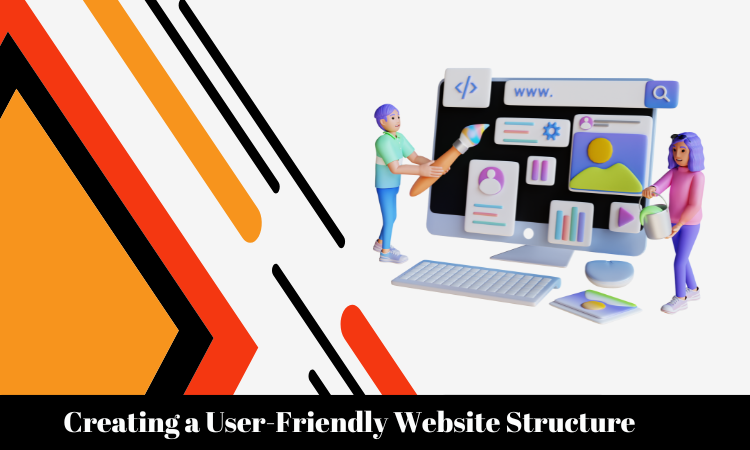
The user experience is a key factor in SEO success. In this section, we discuss the importance of a well-organized and user-friendly website structure. From intuitive navigation to mobile responsiveness, small businesses can learn how to create a website that not only satisfies users but also meets the criteria set by search engines.
Incorporating Advanced SEO Strategies:
Beyond the basics, small businesses can employ advanced SEO strategies to further boost their online presence. This section covers topics such as the importance of multimedia content, the role of backlinks, and the impact of social signals on search engine rankings.
Monitoring and Analyzing SEO Performance:

To refine and improve SEO strategies, constant monitoring and analysis are essential. This section introduces tools for tracking website performance, understanding user behavior, and making data-driven decisions to enhance SEO efforts.
Staying Updated with SEO Trends:
The digital landscape evolves rapidly, and SEO is no exception. Small businesses need to stay informed about the latest trends and algorithm updates. This final section provides insights into staying ahead of the curve and adapting SEO strategies to align with emerging trends.
Incorporating High-Quality Visual Content:
Visual content is a powerful tool for engaging audiences and enhancing user experience. In this section, we explore the impact of images, videos, infographics, and other visual elements on SEO. From optimizing image alt tags to choosing the right file formats, small businesses can learn how to integrate visually appealing content that not only captivates visitors but also aligns with search engine algorithms.
Building Internal and External Links:
Link-building remains a cornerstone of SEO, and in this section, we unravel the intricacies of building both internal and external links. From creating a solid internal linking structure for improved navigation to earning high-quality backlinks from reputable sources, small businesses can implement strategies to strengthen their website’s authority and credibility in the eyes of search engines.
Leveraging Social Media for SEO:

The symbiotic relationship between social media and SEO is often underestimated. This section explores how small businesses can leverage popular social media platforms to boost their SEO efforts. From optimizing social media profiles for search engines to creating shareable content that generates valuable backlinks, this section provides a roadmap for integrating social media seamlessly into your overall SEO strategy.
Monitoring and Analyzing SEO Performance:

Continuous improvement is at the heart of successful SEO strategies. Here, we discuss the importance of monitoring and analyzing SEO performance. From utilizing analytics tools to track key metrics such as organic traffic, bounce rate, and conversion rates, small businesses can gain valuable insights to refine their SEO strategies and ensure sustained growth.
Staying Updated with SEO Trends:
The digital landscape is dynamic, with search engine algorithms constantly evolving. In this section, we emphasize the significance of staying updated with the latest SEO trends. From core algorithm updates to emerging technologies like voice search and mobile optimization, small businesses can stay ahead of the curve by adapting their SEO strategies to align with current trends.
Conclusion:
Elevating a small business website through advanced SEO strategies requires a multifaceted approach. By incorporating high-quality visual content, building strong internal and external links, leveraging social media, monitoring performance, and staying abreast of SEO trends, small businesses can position themselves for success in the competitive digital landscape. As the online ecosystem continues to evolve, embracing these advanced strategies will not only enhance visibility but also establish a solid foundation for sustainable growth and increased brand recognition.
Q1: What is SEO-friendly content, and why is it important for small business websites?
A1: SEO-friendly content refers to web content that is optimized to rank well on search engine results pages (SERPs). For small businesses, this is crucial as it enhances online visibility, increases organic traffic, and helps attract potential customers who are actively searching for relevant products or services.
Q2: How can I identify the right keywords for my small business website?
A2: Conduct thorough keyword research using tools like Google Keyword Planner, SEMrush, or Ahrefs. Focus on keywords relevant to your business niche, products, or services. Consider long-tail keywords and assess their search volume and competition to make informed choices.
Q3: What are the key elements of crafting compelling and informative content?
A3: Compelling content is not only well-written but also addresses the needs and interests of your target audience. Use engaging headlines, provide valuable information, maintain readability, and include multimedia elements like images and videos. Strive for content that is both informative and enjoyable to consume.
Q4: How do I optimize meta tags and descriptions for better SEO?
A4: Craft concise and compelling meta titles and descriptions that accurately represent your content. Include relevant keywords naturally, making sure the meta tags align with the page content. Avoid duplication and ensure uniqueness across your website.
Q5: Why is a user-friendly website structure important for SEO?
A5: A user-friendly website structure enhances the overall user experience, which search engines prioritize. Ensure easy navigation, logical page hierarchy, and mobile responsiveness. A well-organized structure helps search engines index your content efficiently and improves the chances of higher rankings.
Q6: How can visual content contribute to SEO for small business websites?
A6: Visual content, including images, videos, and infographics, enhances user engagement and dwell time on your site. Optimize images with descriptive alt tags, captions, and file names. Engaging visuals can also attract backlinks and social shares, positively impacting your site’s SEO.
Advantages and Disadvantages of Social Media
Introduction
In the era of digital connectivity, social media has emerged as a transformative force, reshaping the way we communicate, share information, and interact with the world. This article explores the nuanced landscape of social media, examining both its advantages and disadvantages.
A. Definition of Social Media
Social media refers to online platforms and technologies that enable individuals and communities to share, create, and exchange information, ideas, and multimedia content. It encompasses a wide range of websites and applications designed for social interaction.
B. Pervasiveness of Social Media in Society
In contemporary society, the influence of social media is ubiquitous. People worldwide use platforms such as Facebook, Twitter, Instagram, and LinkedIn to connect, share experiences, and engage with content. The impact of social media on communication, information dissemination, and networking is profound.
Advantages of Social Media

A. Connectivity and Communication
1. Global Reach
Social media breaks down geographical barriers, allowing individuals to connect with others globally. This unprecedented reach facilitates cross-cultural communication, fostering a sense of global interconnectedness.
2. Instant Messaging and Communication
The real-time nature of social media platforms enables instant communication. Whether through direct messaging or public posts, individuals can share thoughts, updates, and messages with unparalleled speed.
B. Information and Awareness
1. News and Updates
Social media serves as a rapid news dissemination channel, keeping users informed about current events in real time. This instant access to news is crucial for staying updated on global affairs.
2. Educational Resources
Educational content is readily available on social media platforms. From informative articles to online courses, users can access a wealth of educational resources, promoting continuous learning.
C. Networking and Professional Opportunities
1. Job Searches and Recruitment
Social media platforms like LinkedIn play a pivotal role in professional networking and job searches. Job seekers can connect with recruiters, and employers can find suitable candidates efficiently.
2. Business Networking
For businesses, social media offers a powerful tool for networking and building relationships with clients, partners, and other industry professionals. It provides a platform for brand promotion and customer engagement.
Disadvantages of Social Media

A. Privacy Concerns
1. Data Security Issues
Social media platforms are vulnerable to data breaches, leading to potential privacy violations. Users’ personal information may be at risk, raising concerns about the security of online data.
2. Personal Information Exposure
Individuals may unknowingly expose sensitive personal information on social media, increasing the risk of identity theft and other forms of exploitation.
B. Addiction and Mental Health
1. Social Media Addiction
Excessive use of social media can contribute to addiction, negatively impacting individuals’ daily lives. The constant need for online validation may lead to addictive behaviours.
2. Impact on Mental Well-being
Studies suggest a correlation between heavy social media use and mental health issues such as anxiety and depression. Comparisons, cyberbullying, and the pressure for online perfection can contribute to mental health challenges.
C. Spread of Misinformation
1. Fake News and Rumors
The rapid spread of fake news on social media poses a significant threat to public discourse. False information can easily go viral, influencing opinions and behaviours.
2. Filter Bubbles and Echo Chambers
Social media algorithms may create filter bubbles, limiting users’ exposure to diverse perspectives. This can lead to the reinforcement of existing beliefs and the formation of echo chambers.
In conclusion, while social media offers numerous advantages, it is essential to navigate its landscape with caution. Understanding the potential pitfalls allows users to make informed choices, harnessing the benefits of social media while mitigating its drawbacks.
Social Media and Relationships

A. Impact on Personal Relationships
1. Family Dynamics
Social media has both positive and negative effects on family dynamics. On the positive side, it allows family members to stay connected, share updates, and celebrate milestones, regardless of geographical distances. However, the constant exposure to each other’s online lives can also lead to misunderstandings and privacy concerns.
2. Friendships
Social media platforms offer a convenient way to maintain and strengthen friendships. Users can easily stay in touch, share experiences, and engage in conversations. On the flip side, the digital nature of these interactions may lack the depth and nuance of face-to-face communication, potentially impacting the quality of friendships.
B. Cyberbullying and Online Harassment
1. Negative Social Interactions
The anonymity provided by social media can lead to negative social interactions, including cyberbullying and online harassment. Individuals may face criticism, bullying, or even threats, affecting their mental well-being and relationships.
2. Strategies for Prevention and Intervention
To address cyberbullying and online harassment, proactive strategies are essential. Social media platforms, parents, and educators play a crucial role in implementing preventive measures and intervening when negative interactions occur. Education and awareness campaigns are also effective tools in fostering a safer online environment.
Business and Marketing on Social Media

A. Opportunities for Businesses
1. Marketing and Branding
Social media provides businesses with unprecedented opportunities for marketing and branding. Through targeted campaigns, businesses can reach a vast audience, increase brand visibility, and engage with potential customers in innovative ways.
2. Customer Engagement
Businesses can leverage social media to engage directly with their customers. Through feedback, comments, and messages, companies can gain valuable insights, build customer loyalty, and enhance their products or services.
B. Challenges for Businesses
1. Negative Publicity
The viral nature of social media means that negative publicity can spread rapidly. A single incident or negative customer experience can escalate quickly, potentially harming a company’s reputation.
2. Managing Online Reputation
Effectively managing online reputation is crucial for businesses. Social media monitoring tools, prompt responses to customer feedback, and transparent communication are essential components of maintaining a positive online image.
In conclusion, social media’s impact on relationships and business is multifaceted. While it enhances connectivity and provides businesses with unprecedented opportunities, careful navigation and awareness of potential challenges are essential for individuals and companies alike. By understanding the advantages and disadvantages, users can make informed decisions about their online presence and engagement.
Regulation and Ethical Considerations
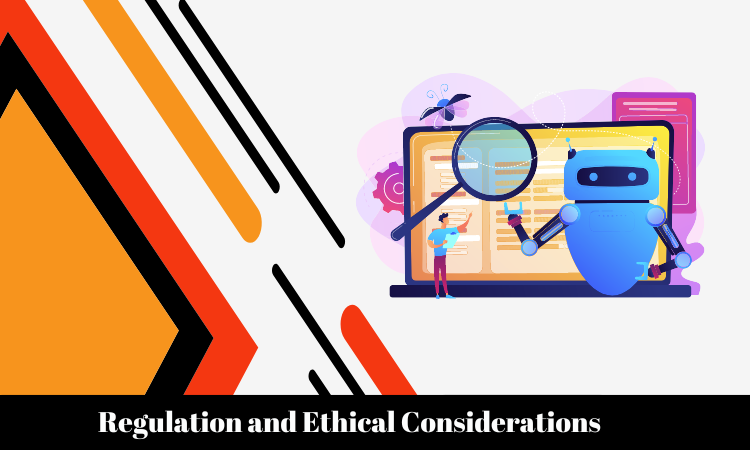
A. Government Regulation
1. Privacy Laws
As social media platforms handle vast amounts of personal data, governments worldwide have implemented privacy laws to protect users. Regulations such as the General Data Protection Regulation (GDPR) in Europe aim to safeguard individuals’ privacy rights, giving users more control over their personal information.
2. Content Moderation
Governments also play a role in regulating the content disseminated on social media. Policies addressing hate speech, misinformation, and explicit content vary globally. Social media platforms are increasingly pressured to implement robust content moderation mechanisms to ensure a safe and responsible online environment.
B. Ethical Use of Social Media
1. Responsible Sharing
Ethical considerations in social media use extend to individual behaviour. Responsible sharing involves thoughtful consideration before posting content, respecting the privacy of others, and avoiding the dissemination of false information. Users have a role in maintaining a positive and trustworthy online community.
2. Cyber Ethics
Cyber ethics involves navigating the digital realm with integrity and responsibility. This encompasses respectful online behaviour, adherence to laws and regulations, and the promotion of positive digital citizenship. Understanding the consequences of one’s actions in the online space is crucial for fostering a healthy and ethical digital culture.
Conclusion
A. Summary of Key Points
Social media, with its advantages and disadvantages, is a dynamic force that has become deeply ingrained in modern society. Challenges like privacy concerns, cyberbullying, and the spread of false information balance out the benefits, which include global connectivity, instant communication, and business opportunities.
B. Balancing the Pros and Cons of Social Media
As we navigate the digital landscape, it’s essential to strike a balance between reaping the benefits of social media and mitigating its potential drawbacks. Government regulations and ethical considerations provide a framework for responsible use, emphasizing the need for users, businesses, and platforms to collaborate in creating a positive and secure online environment.
In conclusion, social media’s impact is far-reaching, influencing relationships, businesses, and societal norms. By understanding and addressing the regulatory and ethical dimensions, we can foster a digital culture that harnesses the positive aspects of social media while mitigating its challenges.
FAQs (Frequently Asked Questions)
How can individuals protect their privacy on social media?
Individuals can safeguard their privacy by regularly reviewing and adjusting privacy settings, avoiding oversharing personal information, and being cautious about accepting friend requests or followers from unknown entities.
What are the signs of social media addiction, and how can it be addressed?
Signs of social media addiction include spending excessive time online, neglecting real-life responsibilities, and experiencing anxiety when not using social media. Addressing addiction involves setting usage limits, taking breaks, and seeking professional support if needed.
How can businesses effectively manage their online reputation on social media?
Businesses can manage their online reputation by actively monitoring social media mentions, responding promptly to customer feedback, and transparently addressing any issues. Proactive engagement and the consistent delivery of quality products or services contribute to a positive online image.
What role do governments play in regulating social media?
Governments regulate social media through privacy laws and content moderation policies. These regulations aim to protect user data, curb the spread of harmful content, and ensure a safe online environment.
How can users contribute to a positive online community?
Users can contribute to a positive online community by practising responsible sharing, promoting respectful interactions, and being critical consumers of information. Reporting inappropriate content and supporting anti-cyberbullying initiatives also play vital roles.
In conclusion, the advantages and disadvantages of social media underscore its transformative influence on society. By fostering responsible use, ethical engagement, and a balanced approach to its myriad facets, we can harness the positive aspects of social media while mitigating its challenges.




